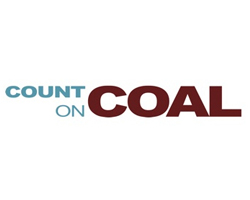
 











|
Signature Sponsor


May 24, 2023 - The Biden administration is building its entire energy agenda on a foundation of speed. Or as some members of the Biden energy team like to say, “deploy, deploy, deploy.” Their mandate is to build wind turbines, solar arrays, site transmission lines and reshore supply chains overnight while the U.S. (EPA) Environmental Protection Agency simultaneously tears down existing sources of power. Speed is the key to threading this needle – the lynchpin to filling the gaps created by EPA’s regulatory agenda – but what happens when instead of moving faster, deployment slows down? There are signs that’s exactly what’s happening. Deployment of new generating capacity and construction of essential infrastructure is slowing down in some places, and where it is speeding up, it still doesn’t appear to be moving fast enough. .png) Rapidly retiring baseload generating capacity – accelerated by EPA’s suite of rulemakings and a range of state mandates – combined with rising electricity demand from electrification, is beginning to collide with a stark reality: renewable energy deployment and its enabling infrastructure aren’t materializing nearly fast enough. Under the pretense of cleaning up and fixing the grid, the administration is breaking it.
The barriers to deployment for wind and solar power, and the required supporting transmission infrastructure, are stubbornly familiar. Supply chain challenges, higher interest rates, public acceptance – or the lack of it – and permitting hurdles are all weighing on a sector that the administration says must fly. As the Clean Power Association recently found, the renewable development pipeline is up slightly from last year but that the current pace of installations would provide just 30 percent of what is required to reach a net-zero power grid by 2035. And the industry experienced a decline in installation volume last year for the first time in five years. Instead of surging ahead, the industry is struggling to even keep up. The statistics for interstate transmission buildouts are even bleaker. According to the Federal Energy Regulatory Commission (FERC), high-voltage electric transmission line additions totaled just 552 miles in the first 11 months of 2022, less than half the previous year, and far below what’s needed to facilitate an accelerated move to wind and solar power. According to the National Renewable Energy Laboratory (NREL), the U.S. needs to add up to 10,000 miles a year of high voltage transmission to hit the Biden administration’s target of renewable-dominant grid by 2035. Money Can’t Guarantee Speed
Money is no silver bullet either. According to the U.S. Energy Information Administration (EIA), transmission spending has increased steadily over the past 20 years but it’s not going to the long distance, interstate projects identified as so important to connecting wind and solar power located in remote areas to urban and industrial demand centers. The PJM grid, the nation’s largest, is case in point. Spending on transmission in PJM has grown by 14% since 2014 but the vast majority is going towards maintaining existing lines. Spending on new transmission lines has decreased 67% in the same period. NREL also found that the largesse tucked into the Inflation Reduction Act and the Infrastructure Investment and Jobs Act could spur a surge in renewable power but that surge is dependent on fixing siting and overcoming permitting barriers. "Barriers to deployment, such as siting and permitting challenges, supply-chain constraints, and social acceptance of electricity infrastructure development, could significantly reduce the rate of clean electricity deployment," NREL found. In other words, money is hardly a cure-all. And now there’s another challenge: the cost of money. Interest rates have significantly taken the wind out of the sails of new capital investments. As two researchers recently observed, renewable energy technologies have relatively large front-loaded costs, are only more competitive relative to already installed fossil generation when interest rates are low. For example, estimates by the International Energy Agency suggest that the levelized cost of energy – a way of estimating the revenue required to build and operate a power source – of a gas-fired plant increases by about 4% if interest rates go from 3% to 7%, but that of offshore wind and solar PV rise by more than 30%. Energy Policy is Local
While economic and energy models are focusing on the macro level, the fights over deployment are increasingly happening at the micro level. As The Wall Street Journal found, “County-by-county battles are raging as wind and solar projects balloon in size, edge closer to cities and encounter mounting pushback…. Projects have slowed. Even in states with a long history of building renewables, developers don’t know if they can get local permits or how long it might take.” For example, in Kansas, where wind power has grown rapidly for two decades, at least five counties in eastern Kansas have recently placed moratoriums or bans on new wind or solar projects, joining 18 others that already restricted wind development to preserve the tallgrass prairie ecosystem. And in Iowa, which has the second-highest installed wind power capacity in the country after Texas, the Journal reported that, “16 of 99 counties had prohibitive rules or a ban against new projects, most of them approved in the previous four years. Between moratoriums and requirements for setbacks between turbines and things such as neighboring property lines, roads or buildings, developers won’t even consider projects on around half to three quarters of land with good wind resources.” These siting challenges – and the growing opposition to industrial renewable deployment – are translating into a clear mismatch between the speed new resources are coming online and the speed at which policy is forcing existing reliable generation off the grid. Consider a recent warning from PJM, until very recently a bastion of surplus power with an ample reserve margin. PJM projects that it will lose 40 GW of generating capacity by 2030 – enough to power 30 million homes – with optimistically 31 GW of additions in the same period, even as system-wide power demand rises. It believes it will be short of power during periods of peak demand within just a few years. What is happening with PJM is indicative of what’s happening in markets and states across the country. As FERC Commissioner Mark Christie recently observed, power plants are being retired at a faster pace than they’re being replaced. “The arithmetic doesn’t work,” he said. “This problem is coming. It’s coming quickly. The red lights are flashing.” |
 










|